The Sultan in New York
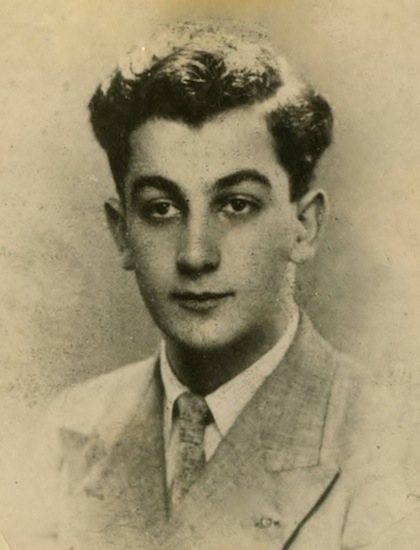
HIH Prince Bayezid Osman (Courtsey of Peter Constantine)
All the members of the Ottoman Royal Family, which for 622 years had ruled an Empire that had once spanned three continents, were sent into exile on 3 March 1924 as the Ottoman caliphate was abolished. Each member of the dynasty was given a ‘one-way’ passport out of Turkey and two thousand English pounds; their wealth was confiscated. The exile was to last 28 years for the women of the Ottoman dynasty, and 50 years for the men.
In March of 1924 in Turkey, there was a total of 144 Ottomans, consisting of 36 men, 48 women, and 60 children, and 140 of these 144 royals were no longer in Turkey by the evening of March 15th. The last Ottoman royal to leave Turkey was Princess Fatma, the daughter of Sultan Murad V. When the law for exile was passed, she was in bed with measles, so she was permitted to stay in Turkey until she recovered. Then Princess Fatma left for Vienna by train along with her three children. With her departure, the exile of the Ottoman royals was completed.
Members of the Ottoman Dynasty are still living in about ten different countries around the world, including France, England, Spain, Sweden, Syria, Lebanon, Egypt, Jordan, Mexico, and the USA. There are still 25 Princes (princes), 16 Sultans, 23 Sultanzades (sons of Ottoman Princesses), and 13 Hanım Sultans (daughters of Ottoman Princesses) alive today.
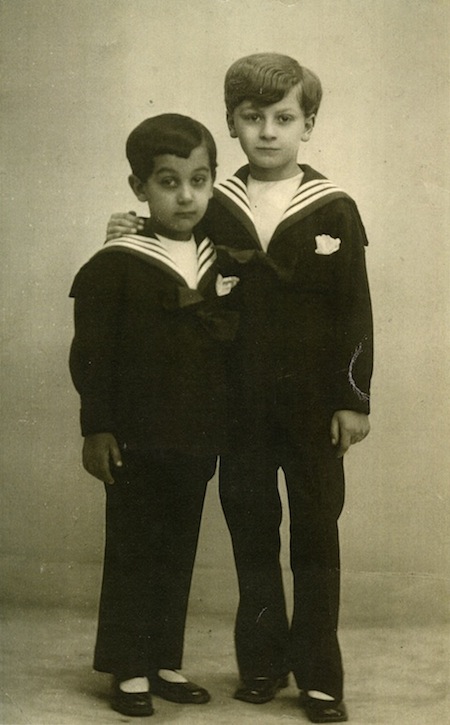
The princes who are direct descendants of Osman I, the founder of the Ottoman Dynasty, are titled ‘Şehzade’ (Prince); princesses who are descendants of sultans and princes are titled ‘Sultan’; the sons of princess who marries a man outside the Ottoman Dynasty are bear the title ‘Sultanzade,’ and the daughters of princesses bear the title ‘Hanım Sultan.’
Today, the oldest living member of the Ottoman Dynasty is the Head of the Dynasty Prince Osman Bayazıd, who was born in 1924 as the great-grandson of the Sultan Abdülmecid. His mother, Princess Şadiye Hadicei was six months pregnant with him when she went into exile. He was the first Ottoman prince to be born in exile on June 23rd, 1924, in France. His elder brother by four years was Prince Burhaneddin Cem (1920-2008), and his other siblings from his father’s other wives were Arife Kadriye (1895-1933), Fatma Zehra (1895-1965), Rabia Nilüfer (1912-1997), Ayşe Masume Fethiye (1916-1944), and Fevziye (1928-2014).
Prince Osman Bayazıd’s father, Prince İbrahim Tevfik, was the only son of Mehmed Burhaneddin, who was one of the sons of Sultan Abdülmecid I and died at the age of 27. Prince İbrahim Tevfik was raised by his uncle Sultan Abdülhamid II. After the exile of the Dynasty, he settled in France with his wife and children. He died in France on 31 December 1931.
The age difference between Prince Osman Bayazıd, who lives in New York, and the fifth generation grandchild of the Sultan Mehmed Reşad, Prince Ziya Reşad, is eighty-eight years.
In addition to Osman Bayazıd, living in the USA are Prince Cengiz Nazım, his son Prince Ziyaeddin,and Necla Hanım Sultan. If the Ottoman Empire rule had continued, Prince Osman Bayazıd would today be Sultan Bayazıd III.
TURKOFAMERICA brought together in New York Prince Bayazıd, the Head of the Ottoman Dynasty; Prince Cengiz Nazım, the son of the grandchild of the Sultan Reşad; Nejla Chawky Hanım Sultan, the granddaughter of Prince Abdülhalim who was the grandson of Sultan Abdülmecid I; and Mediha Nami de Martinez, the daughter of Prince Osman Nami, the grandson of Sultan Abdülhamid II.
Prince Osman Bayazıdand Princess Nejla Chawky live in New York, Prince Cengiz Nazım lives in North Carolina, and his son Prince Ziyaeddin in California. And Mediha Nami de Martinez, who is the oldest daughter of Prince Osman Nami, Abdülhamid II’s daughter Ayşe Sultan’s son, lives in Mexico. TURKOFAMERICA is the first print publication to witness the meeting of these members of the dynasty. The Head of the Ottoman Dynasty, Osman Bayazıd, answered TURKOFAMERICA’s questions, allowing a thorough interview for the first time.
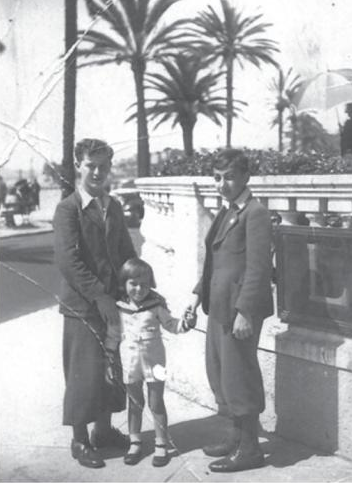
45 YEARS AT THE LIBRARY
Prince Bayazıd, who became the 44th Head of the Imperial House of Osman after Osman Ertuğrul -the grandson of the Sultan Abdülhamid II passed away in 2009, is an ordinary citizen who leads a simple life, and has neither married nor has children. He is the sort of person who is partiularly kind to others, is witty, and is someone who likes to express what he thinks directly.In his modesty he says: “There is nothing interesting in my life,” although he has seen so much in his lifetime.
When I say to him, “Your stories are so interesting; they could be a topic for a book,” he is so modest that he replies, “Not for a book, they would take only a few pages.” He is so generous that he once gave all the money in his pocket to the ship’s crew as tips when he traveled from France to the USA after World War II. He is also so generous as to call the office of the Turkish Airline when going to Turkey and ask for the price of the business class tickets, and then buys an economy class one and donates the price difference to charity.
Of the three sons of Princess Şadiye Hadice and Prince İbrahim Tevfik, Osman Bayazıd is the only one still living. His brother Mehmed passed away as a child due to pneumonia. Having lived in France between the years 1924 and 1941, Prince Bayazıd moved to the USA with his brother Burhaneddin Cem and his stepfather after Prince Ibrahim Tevfik passed away.. His mother Şadiye Hadice was the daughter of a wealthy family on her father’s side as well. Her father was a hero of the the Russo-Turkish War of 1877–78, Çürüksulu Gürcü Bahri Pasha. The famous Çürüksulu Mansion in Salacak, İstanbul belonged to his grandfather’s nephew Çürüksulu Ahmet Pasha.
Osman Bayazıd had sisters named Kadriye, Fatma Zehra, Rabia Nilüfer, Ayşe Fethiye, and Fevziye, from the same father and different mothers. His brother Burhaneddin Cem found their sister Nilüfer in Algeria years later. During that time, Bayazıd was in the USA army. Nilüfer came to the USA in the following year and lived there until the end of her life. Today, none of his siblings are alive. His last surviving sister, Fevziye, who had worked in UNESCO for many years, passed away on 9 April 2014 in France. His brother Burhaneddin Cem, who was also living in New York like him, passed away in New York in 2008.
There is a question he always asks when talking about the exile years: “They said to us, ‘You’ve got 24 hours. You can take with you whatever you can carry.’ But what could be carried? My mother couldn’t even take along her dowry.” When they were about to board the Orient Express for Paris, someone who did not want to stay in Turkey begged his mother: “Please, take me with you, too.” When the person was asked who she was, she replied that she was the second wife of his father, İbrahim Tevfik. They went to France together. Six months later, the French police came to their house to arrest Prince İbrahim Tevfik because, while they were crossing the border, there were two wives carrying the name Princess Tevfik. They explained the situation and managed to avoid arrest.
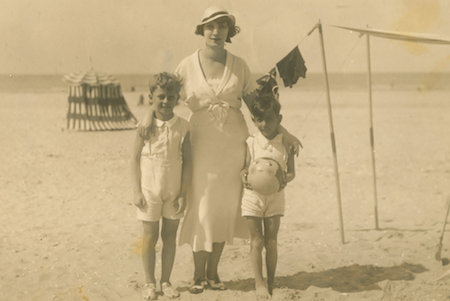
EDUCATION AT THE SORBONNE, PRINCETON AND NYU
Having attended high school in France, Prince Osman Bayazıd also received an education at the Sorbonne University in Paris in the following years. Though he attended an art school for a short while, he did not continue because sketching was not one of his strengths. Before coming to the USA with his brother Cem, he went to England to improve his English. He says that his English was bad during the first years. One of the memories he recalls from the years he stayed in France is the time when his cousin -- the daughter of the last Caliph Abdülmecid, Princess Dürüşehvar, who was married to Azam Jah, the son of the Nizam of Haydarabad - one of the wealthiest men in the world - had wanted to attend the French Independence Day ceremonies on 14 July 1940 and listen to the German actress Marlene Dietrich sing in front of the opera house in Paris. However, Princess Dürüşehvar planned to join the crowd wearing a very precious necklace around her neck. When Osman Bayazıd warned her not to, saying that it would be stolen, she rearranged the necklace so that it hung down her back. Understanding that he would not be able to convince Princess Dürüşehvar not to wear the necklace, Prince Bayazıd ordered one of his mother’s helpers to watch over the necklace throughout the night. Another detail he remembers from that night is that he had liked neither the voice nor the stage performance of Marlene Dietrich.
After living in Paris for some time, the family moved to Nice and bought an apartment there by selling the remaining possessions of his mother Princess Şadiye Hadice. Princess Şadiye put the house in her husband Prince İbrahim Tevfik’s name even though they were divorced and ordered the payment of some amount of income from the bank to him for ten years. His mother Şadiye had a very strong character. She had overcome things that looked too difficult for a woman to handle by herself in those days. She had gone to Romania from France on her own, and sold the assets belonging to her very rich mother. She was sad to be exiled from her country, but she never looked back. She strove to instill in her children a consciousness about the culture of Turkey and the essence of Turkishness. She had a charismatic presence.
After the death of her husband İbrahim Tevfik, Princess Şadiye Hadice married a French-American businessman, who was their neighbor when they lived in France. Their first encounter took place during the regular monthly meetings of the owners of the apartments they were living in. Having fallen in love with Princess Şadiye during those meetings, he got family friends involved in order to get to know her. In fact, Princess Naciye, who was then married to Enver Pasha’s brother, Kamil Pasha, arranged the meeting of Princess Şadiye with her admirer during a party at her house. Şadiye rejected this advance by saying to Princess Naciye, “If you invite him again to a place where I am, I will never talk to you again.” However, she got married and came to the USA from France in 1941. She met her mother-in-law and two sister-in-laws. They did not like each other that much. The family were strict Catholics and objected to their son marrying a Muslim. However, the marriage took place despite the family’s objection. Şadiye wanted to bring her royal stepdaughters, along with her two sons, to the USA but the court did not allow it.
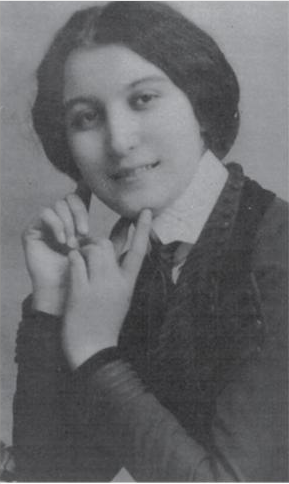
Princess Şadiye’s first husband, Prince İbrahim Tevfik, who passed away on 31 December 1931, was someone who was very sensitive and known for his delicateness; someone who did not care much about money, in fact, never even laid a finger on it. Osman Bayazıd says that his father used to play the piano very well, and actually, even received offers from different concert touring companies in France to work as a pianist. He states, “A concert hall known as Paris’s Carnegie Hall offered him a tour on a train throughout France but my father İbrahim Tevfik did not accept the offer.” He remembers that his father used to have about twelve parrots and different kinds of other pets. He gave one of the parrots to Bayazıd Osman and another to his older brother Cem as a gift. He says that his parrot gave everyone in the house a very hard time. His last memory of his father was when he gave a silk scarf, with the letters I and T on it, to his mother as a gift. He visited his father’s grave in Nice years later.
When the family went into exile, they had two kalfas (chief palace servants) with them: Cenan and Rengin Kalfa. Zerin Kalfa continued serving Naciye Sultan for some time, and, then went into service with Dürüşehvar Sultan later on. Cenan Kalfa moved to Lebanon with Prince Bayazıd’s sister Masume. Prince Bayazıd says, “You could not see Princess Dürüşehvar without consulting Zerin Kalfa. Indeed, once she told me, ‘I’ll ask if she would like to see you.’ I objected and said, ‘Of course, she would like to see me. She’s my cousin.’” Rengin Kalfa was responsible for Prince Bayazıd. But she had never taken care of a child in her life before. “I was a very fat baby. But after Rengin began looking after me I became too thin. When my mother asked the Kalfa why I had lost weight, the Kalfa told her that she was giving me two spoons of rice pudding daily. The Kalfa had almost caused me to die of neglect and starvation,” he says, with a laugh.
He talks about the first day he arrived in New York in 1941 with his older brother Cem. They talked to each other while they were looking out the narrow and thin window of their apartment in the Tudor City Apartments, which was built at the time as the world’s first high-rise residential complex, and they said, “I guess we are very poor. Otherwise, we would not be living in a house with such a small window.” All of the houses where they had lived in France had had big windows. Later, they lived on Park Avenue and Sutton Place and 57th Street. During those years, from their family, the son of Sultan Abdülhamid II, Prince Burhaneddin, and his sons Princes Osman Ertuğrul and Fahreddin were living in the USA. The granddaughter of Sultan Reşad, Mihrimah Sultan, stayed with them in New York for some time. His best friends in childhood were Prince Ali Enver and Princess Rana, the children of Enver Pasha’s wife Princess Naciye.
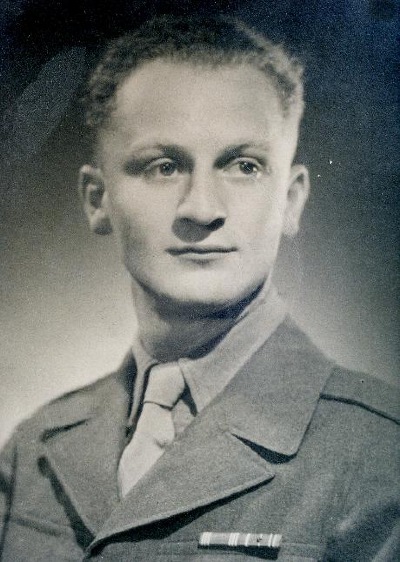
HE WENT TO TURKEY FOR THE FIRST TIME IN 1985
The Head of the Dynasty, who had spent most of his life in America, visited Turkey for the first time in 1985 at his mother’s insistence, although the ban on the return of the male members of the Dynasty to the country had been lifted in 1974. Princess Şadiye had returned to Turkey when her American husband passed away. He says, “My mother said, ‘See Turkey through my eyes for once’. I did not want to spend all the money we earned in the USA with all kinds of difficulties on those that exiled us from our country. But I loved the country so much when I went. When I was in line at a bank, young people that saw that I was old brought me a chair. That pleased me a lot.” Although the Prince, who has visited Turkey regularly every year following his first trip, claims from time to time that he is “bored of New York” and that he would “move to Turkey,” he states that he has never thought of settling in Turkey permanently. When his mother went to Turkey for the first time after the exil, the secret police would follow her around. Prince Bayazıd tells of an instance when his mother called over a police officer who was trying to hide behind a tree but was still visible because he was too fat, and told him “Well, since you will be following me all day, you might as well give me a hand. Here, carry these shopping bags.”
During his first visit to Turkey, he went to see the palaces that his grandfathers had built. While he was visiting the Dolmabahçe Palace, he saw that the windows were very dirty. He could not stop himself from asking the security guard, “This is a touristic place. It is a shame that the palace windows are covered with rust and dirt. Why aren’t you cleaning them?” He got the reply, “There are no funds.” He replied that he would be happy to come back the following day to clean the windows himself. He says that he saw the windows clean during his next visit. He also expresses the opinion that Dolmabahçe is the palace that he likes the most among them all.
HE WAS THE RIGHT-HAND MAN IN HIS STEPFATHER’S FACTORIES
Osman Bayazıd started his first job with his stepfather who had factories in various sectors. His stepfather had factories that produced plastic frames and spare parts for radios for the army during World War II. He helped his stepfather in Manhattan, from 7am to 11pm, with everything related to the factories. He says, “I used to help with everything. I even used to take out the trash.” He continued to manage things in the factories until his stepfather passed away in 1952. Then he started looking for a new job. One of his friends asked him, “You like children. Why don’t you work in the children’s section of a library?”
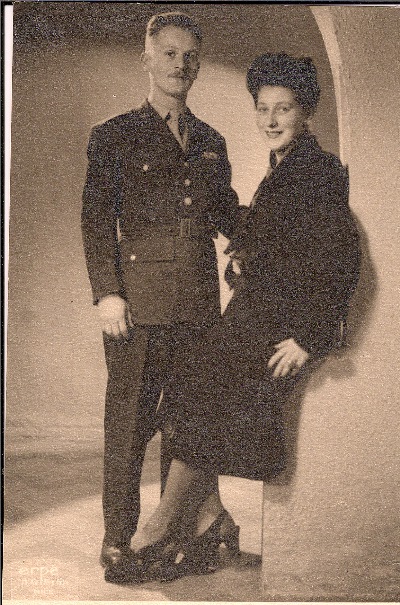
He applied to the New York library system. He added the recommendation letter of his friend, who was the director of the Manhattan region, as reference. Although he didn’t hear from them for a while, he made a call. When the official at the Hudson Park Library, located in the downtown area of Manhattan, said “No other application except from a Turk has been received,” he asked, “What is the problem with being a Turk?” The library official, whose father and mother were diplomats and who was born in Turkey during their posting, told him that he was also part Turkish. He got in the library as a translator with the approval of the official. After working at the Hudson Library for five years, he transferred to the Donnell Library Center, one of the branches of the New York Public Library located on 53rd Street between 5th and 6th Avenues. Having spent 45 years of his life doing translations in New York libraries, Prince Bayazıd retired in 1997. Because there was nobody in the translation department, he was called again after his retirement. The library was demolished on 30 August 2008, and a 35-story building was built in its place. The library itself was moved to another building.
His job in the library was to translate short summaries of the texts that were not written in the Latin alphabet. Osman Bayazıd, who is able to translate texts from 15 languages, including Farsi, Arabic, Armenian, Hindu, Urdu, Polish, the Baltic languages, and the Cyrillic alphabet, can also speak Farsi, Italian, English, French, and Portuguese in addition to Turkish. He learned Portuguese in Portugal, where he had stayed for a year before coming to the USA. The Prince also knows how to read and write old Turkish. He recounts that he used to exchange letters with his older brother Burhaneddin Cem and his mother in Ottoman Turkish.
His translations were regularly published in the Library Journal. He mentions that the library official had not wanted him to put his signature under his translations from Armenian and Greek due to the conflict between the two societies and the Turks. He says that Armenians and Greeks who came to the library to meet him, because of the ‘Has been reviewed by a New York Public Library member’ phrase that he had put as signature, used to be given the answer: “He is not here at the moment” and turned away. Prince Bayazıd is still a member of the New York Public Library Retirees Association. He attends its annual meetings and keeps in touch with his old friends.
HE WAS ABOUT TO BEAT AMBASSADOR ERTEGÜN
The Turkish officials were prohibited by the Turkish government to speak with the members of the Ottoman Dynasty during the exile years. Osman Bayazıd says that once, when he attended a reception at the United Nations in New York with his older brother Burhaneddin Cem, “Half of the crowd left the reception when they learned that we were from the Ottoman Dynasty.” He talks about an instance when a woman working at the Turkish Consulate came up to him, with a crowd of delegates along with her, and, after realizing from his accent that he was a foreigner, she asked, “Where are you from?” Prince Bayazıd says, “I told her I was a Turk. I said my name and last name. Her face dropped. And she left the library with the people with her without saying anything. The library director who was watching us from a distance came near me and asked me what I had told her.”
These were not the only times he had contact with officials from consulates. During the years when they were staying in France, the German forces did not allow Prince Bayazıd and his family to leave the country because they wanted to use them as hostages and send them to a prison camp if Turkey were to join the war against Germany. In order for the family to leave the country, they needed a letter from the Turkish Embassy in Washington declaring that they were not Turkish citizens. His mother Princess Şadiye remembered a childhood friend from her town, Münir Ertegün, the Ambassador of Turkey in Washington then. Osman Bayzıd’s stepfather had gone to Washington to request the letter but the answer he got was, “I don’t even know them, how could I give a document about them not being citizens?” Because of the document they could not get, they had to stay in France for more than a year with the fear of being sent to a prison camp. Osman Bayazıd, who used to go to Washington often because of his stepfather’s relations at the US Ministry of Foreign Affairs after moving to the USA, had once gone to the Embassy with the intention to punch Münir Ertegün for having caused them to risk their lives and stay in Nazi occupied France for an extra year. He says, “I used my title only once in my life. And that was with Münir Ertegün. I went to the Embassy. I sent a message as, ‘Ottoman Prince Osman Bayazıd is waiting for you downstairs.’ Then, when I saw someone tiny in front of me, I changed my mind about punching him.”
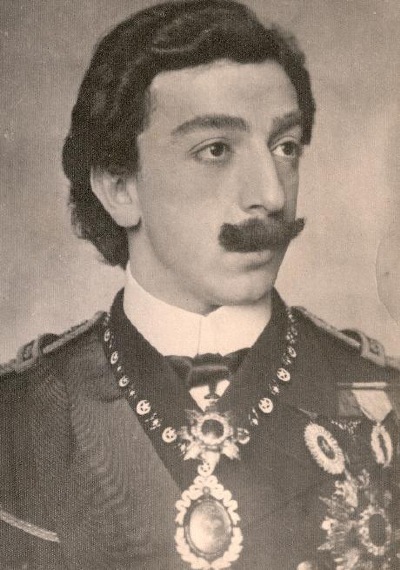
Also being a very good cook, Prince Bayazıd says that most of the Kalfas who had come along with them after the exile did not know how to cook. “After we moved into the house in France, my mother called over everyone in the household, and asked who knew how to cook. None of them answered. One of them said her job was to iron my father’s handkerchiefs and another one’s was cleaning. We learned cooking from our neighbors,” he says. He says he himself makes very nice Circassian chicken. His favorite Turkish food is börek. Adding that his mother had always taken pride in being a Turk and that she often expressed her love for Turkey, the Prince mentions that he also learned Surahs and Ayats of the Koran from the preachers that would come to their house.
TWO YEARS IN THE US ARMY
After his older brother Burhaneddin Cem joined the US Army, the Prince also followed along to join for two years. His tour of duty took him to Germany, Belgium, and England. He says, “My brother used to joke and say that ‘if Bayazıd joins the army, WWII will come to an end.’” Since he joined the army during the war, he was shipped out to Germany right after the war ended. In the army, because of his French accent, a commander named Bernardo gave him the nickname ‘Damn Yankee.’ (Commander Bernardo, a Southerner, mistook the Prince’s way of speaking as New Yorkese) Prince Bayazid received US citizenship after joining the army. He was not a citizen of any country until then, and he had also rejected getting French citizenship. He only had had a refugee Nansen passport, and had not even renewed it. ‘Since I was not going to be able to become a citizen of both countries, I did not pursue French citizenship,” he says.
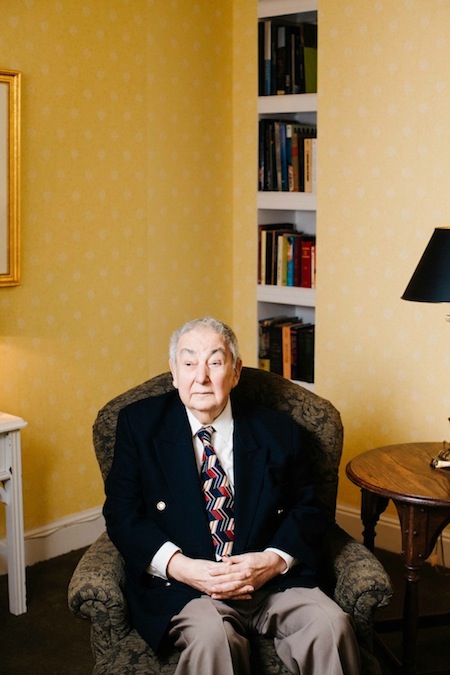
Once, when he was at the camp in the army, he found himself defenseless against three people who attacked him and he ended up getting beaten up. He adds, “They told me they would protect me if I paid them 20 dollars each. I told them ‘All three of you attacked me while I was not aware. I don’t need protection.’ Then, I showed the knife, which I always carried with me, to everyone and said, ‘If anyone again comes within a meter of my bed, I’ll cut his throat.’ Because of this outburst of mine, they then always used to call me the ‘Crazy Turk.’”
He left the army in order to study journalism at New York University. He also took Turkish lessons from Sultan Vahdettin’s granddaughter Princess Hümeyra Özbaş, who was teaching Turkish at Princeton University.
After he started working at the library, his mother wanted him to move to a house more secure than the one in downtown Manhattan between Prince Street and Spring Street, so, with the help of his mother’s friend, who was the head of the board of the insurance company Metlife, he rented an apartment in one of the complexes that were designated for those returning from the army. He has been living in the same apartment for over 30 years.
HIS FAVORITE HOTEL IS THE PERA PALACE
Prince Bayazıd, who stays at the Pera Palace Hotel when he goes to Turkey, answers the question of what he thinks about Atatürk: “He saved Turkey from being reduced to a tiny piece of land in Anatolia.” When asked whether he is angry or offended, he says, “I was born abroad. I never heard anything bad about Turkey from my mother. She used to love Turkey and she returned and also got her citizenship. But I don’t understand why the family was given 24 hours to leave the country.”
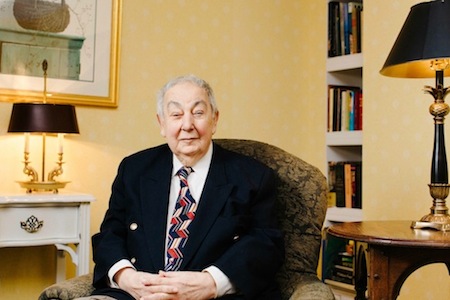
Talking about how his mother had left the country without even being able to take the dowry chest that his father had given her, Prince Bayazıd asks, “What could you take along in such a short time?” He says that they used to make plans with his older brother Cem to spend six months of the year in Turkey and the remaining six months in the USA; however, with the passing of Prince Cem, that plan was never actualized.
SULTANS SHOULD ALSO BE THE HEADS OF THE DYNASTY
There is a dramatic answer to the question of whether he has a memento from his father: one of the few belongings that they took along with them was the Ottoman medals belonging to his father İbrahim Tevfik. One of those medals was a gift to Osman Bayazıd and, the other to his brother Burhaneddin Cem from their father. However, because his father had not had anything valuable to present as a gift at the wedding of Ali Vasıb and his wife Princess Mukbile, who got married in 1931 in Nice, he gave the last two medals as a wedding gift to Mukbile. Bayazıd mentions that he has now got a medal that was bought from an antique house by his niece Princess Nilüfer and belongs to the Sultan Abdülmecid era.
Stating that he has no wish to be buried in Turkey when he passes away, Prince Bayazıd also adds that he has heard of how the funeral of Osman Ertuğral, the previous Head of Dynasty, was very crowded. Although he lived in New York, Osman Ertuğrul passed away in İstanbul in 1997; he was the second Prince to pass away in Turkey after the exile.
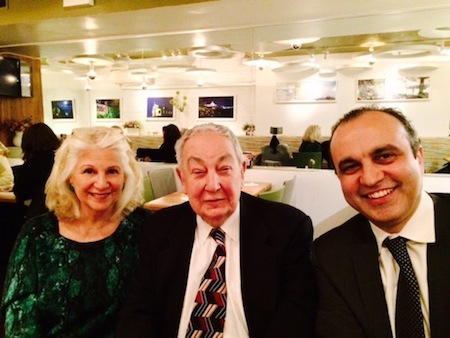
He also tells of a dialogue about the Dynasty Leadership that took place between him and Neslişah Sultan, who was the last member of the Ottoman Dynasty to be born during the Ottoman era and passed away in 2012: ‘The Chief of the Dynasty is always a man. I talked to Neslişah Sultan. I said, ‘‘Let’s make a decision that from now on the oldest Sultans can also become the Head of the Dynasty.’’ The conversation was to change the women’s ranks of Sultan and Hanımsultan, and give all the women equality within the dynasty to ensure that their children do not lose Hanedan rank’ She also agreed but we lost Neslişah Sultan before we were able to make this decision a reality.”
In March of 1924 in Turkey, there was a total of 144 Ottomans, consisting of 36 men, 48 women, and 60 children, and 140 of these 144 royals were no longer in Turkey by the evening of March 15th. The last Ottoman royal to leave Turkey was Princess Fatma, the daughter of Sultan Murad V. When the law for exile was passed, she was in bed with measles, so she was permitted to stay in Turkey until she recovered. Then Princess Fatma left for Vienna by train along with her three children. With her departure, the exile of the Ottoman royals was completed.
Members of the Ottoman Dynasty are still living in about ten different countries around the world, including France, England, Spain, Sweden, Syria, Lebanon, Egypt, Jordan, Mexico, and the USA. There are still 25 Princes (princes), 16 Sultans, 23 Sultanzades (sons of Ottoman Princesses), and 13 Hanım Sultans (daughters of Ottoman Princesses) alive today.

HIH Prince Burhaneddin (at right) and HIH Prince Bayezid Osman in France. (Courtsey of Peter Constantine)
The princes who are direct descendants of Osman I, the founder of the Ottoman Dynasty, are titled ‘Şehzade’ (Prince); princesses who are descendants of sultans and princes are titled ‘Sultan’; the sons of princess who marries a man outside the Ottoman Dynasty are bear the title ‘Sultanzade,’ and the daughters of princesses bear the title ‘Hanım Sultan.’
Today, the oldest living member of the Ottoman Dynasty is the Head of the Dynasty Prince Osman Bayazıd, who was born in 1924 as the great-grandson of the Sultan Abdülmecid. His mother, Princess Şadiye Hadicei was six months pregnant with him when she went into exile. He was the first Ottoman prince to be born in exile on June 23rd, 1924, in France. His elder brother by four years was Prince Burhaneddin Cem (1920-2008), and his other siblings from his father’s other wives were Arife Kadriye (1895-1933), Fatma Zehra (1895-1965), Rabia Nilüfer (1912-1997), Ayşe Masume Fethiye (1916-1944), and Fevziye (1928-2014).
Prince Osman Bayazıd’s father, Prince İbrahim Tevfik, was the only son of Mehmed Burhaneddin, who was one of the sons of Sultan Abdülmecid I and died at the age of 27. Prince İbrahim Tevfik was raised by his uncle Sultan Abdülhamid II. After the exile of the Dynasty, he settled in France with his wife and children. He died in France on 31 December 1931.
The age difference between Prince Osman Bayazıd, who lives in New York, and the fifth generation grandchild of the Sultan Mehmed Reşad, Prince Ziya Reşad, is eighty-eight years.
In addition to Osman Bayazıd, living in the USA are Prince Cengiz Nazım, his son Prince Ziyaeddin,and Necla Hanım Sultan. If the Ottoman Empire rule had continued, Prince Osman Bayazıd would today be Sultan Bayazıd III.
TURKOFAMERICA brought together in New York Prince Bayazıd, the Head of the Ottoman Dynasty; Prince Cengiz Nazım, the son of the grandchild of the Sultan Reşad; Nejla Chawky Hanım Sultan, the granddaughter of Prince Abdülhalim who was the grandson of Sultan Abdülmecid I; and Mediha Nami de Martinez, the daughter of Prince Osman Nami, the grandson of Sultan Abdülhamid II.
Prince Osman Bayazıdand Princess Nejla Chawky live in New York, Prince Cengiz Nazım lives in North Carolina, and his son Prince Ziyaeddin in California. And Mediha Nami de Martinez, who is the oldest daughter of Prince Osman Nami, Abdülhamid II’s daughter Ayşe Sultan’s son, lives in Mexico. TURKOFAMERICA is the first print publication to witness the meeting of these members of the dynasty. The Head of the Ottoman Dynasty, Osman Bayazıd, answered TURKOFAMERICA’s questions, allowing a thorough interview for the first time.

HIH Prince Burhaneddin Cem (at left) and HIH Prince Bayezid Osman (at right) with their step brother in France in 1936.
45 YEARS AT THE LIBRARY
Prince Bayazıd, who became the 44th Head of the Imperial House of Osman after Osman Ertuğrul -the grandson of the Sultan Abdülhamid II passed away in 2009, is an ordinary citizen who leads a simple life, and has neither married nor has children. He is the sort of person who is partiularly kind to others, is witty, and is someone who likes to express what he thinks directly.In his modesty he says: “There is nothing interesting in my life,” although he has seen so much in his lifetime.
When I say to him, “Your stories are so interesting; they could be a topic for a book,” he is so modest that he replies, “Not for a book, they would take only a few pages.” He is so generous that he once gave all the money in his pocket to the ship’s crew as tips when he traveled from France to the USA after World War II. He is also so generous as to call the office of the Turkish Airline when going to Turkey and ask for the price of the business class tickets, and then buys an economy class one and donates the price difference to charity.
Of the three sons of Princess Şadiye Hadice and Prince İbrahim Tevfik, Osman Bayazıd is the only one still living. His brother Mehmed passed away as a child due to pneumonia. Having lived in France between the years 1924 and 1941, Prince Bayazıd moved to the USA with his brother Burhaneddin Cem and his stepfather after Prince Ibrahim Tevfik passed away.. His mother Şadiye Hadice was the daughter of a wealthy family on her father’s side as well. Her father was a hero of the the Russo-Turkish War of 1877–78, Çürüksulu Gürcü Bahri Pasha. The famous Çürüksulu Mansion in Salacak, İstanbul belonged to his grandfather’s nephew Çürüksulu Ahmet Pasha.
Osman Bayazıd had sisters named Kadriye, Fatma Zehra, Rabia Nilüfer, Ayşe Fethiye, and Fevziye, from the same father and different mothers. His brother Burhaneddin Cem found their sister Nilüfer in Algeria years later. During that time, Bayazıd was in the USA army. Nilüfer came to the USA in the following year and lived there until the end of her life. Today, none of his siblings are alive. His last surviving sister, Fevziye, who had worked in UNESCO for many years, passed away on 9 April 2014 in France. His brother Burhaneddin Cem, who was also living in New York like him, passed away in New York in 2008.
There is a question he always asks when talking about the exile years: “They said to us, ‘You’ve got 24 hours. You can take with you whatever you can carry.’ But what could be carried? My mother couldn’t even take along her dowry.” When they were about to board the Orient Express for Paris, someone who did not want to stay in Turkey begged his mother: “Please, take me with you, too.” When the person was asked who she was, she replied that she was the second wife of his father, İbrahim Tevfik. They went to France together. Six months later, the French police came to their house to arrest Prince İbrahim Tevfik because, while they were crossing the border, there were two wives carrying the name Princess Tevfik. They explained the situation and managed to avoid arrest.

HIH Prince Burhaneddin (at left) and HIH Prince Bayezid Osman with their mother Sadiye Hadice Hanimefendi in Nice, France. (Courtsey of Peter Constantine)
EDUCATION AT THE SORBONNE, PRINCETON AND NYU
Having attended high school in France, Prince Osman Bayazıd also received an education at the Sorbonne University in Paris in the following years. Though he attended an art school for a short while, he did not continue because sketching was not one of his strengths. Before coming to the USA with his brother Cem, he went to England to improve his English. He says that his English was bad during the first years. One of the memories he recalls from the years he stayed in France is the time when his cousin -- the daughter of the last Caliph Abdülmecid, Princess Dürüşehvar, who was married to Azam Jah, the son of the Nizam of Haydarabad - one of the wealthiest men in the world - had wanted to attend the French Independence Day ceremonies on 14 July 1940 and listen to the German actress Marlene Dietrich sing in front of the opera house in Paris. However, Princess Dürüşehvar planned to join the crowd wearing a very precious necklace around her neck. When Osman Bayazıd warned her not to, saying that it would be stolen, she rearranged the necklace so that it hung down her back. Understanding that he would not be able to convince Princess Dürüşehvar not to wear the necklace, Prince Bayazıd ordered one of his mother’s helpers to watch over the necklace throughout the night. Another detail he remembers from that night is that he had liked neither the voice nor the stage performance of Marlene Dietrich.
After living in Paris for some time, the family moved to Nice and bought an apartment there by selling the remaining possessions of his mother Princess Şadiye Hadice. Princess Şadiye put the house in her husband Prince İbrahim Tevfik’s name even though they were divorced and ordered the payment of some amount of income from the bank to him for ten years. His mother Şadiye had a very strong character. She had overcome things that looked too difficult for a woman to handle by herself in those days. She had gone to Romania from France on her own, and sold the assets belonging to her very rich mother. She was sad to be exiled from her country, but she never looked back. She strove to instill in her children a consciousness about the culture of Turkey and the essence of Turkishness. She had a charismatic presence.
After the death of her husband İbrahim Tevfik, Princess Şadiye Hadice married a French-American businessman, who was their neighbor when they lived in France. Their first encounter took place during the regular monthly meetings of the owners of the apartments they were living in. Having fallen in love with Princess Şadiye during those meetings, he got family friends involved in order to get to know her. In fact, Princess Naciye, who was then married to Enver Pasha’s brother, Kamil Pasha, arranged the meeting of Princess Şadiye with her admirer during a party at her house. Şadiye rejected this advance by saying to Princess Naciye, “If you invite him again to a place where I am, I will never talk to you again.” However, she got married and came to the USA from France in 1941. She met her mother-in-law and two sister-in-laws. They did not like each other that much. The family were strict Catholics and objected to their son marrying a Muslim. However, the marriage took place despite the family’s objection. Şadiye wanted to bring her royal stepdaughters, along with her two sons, to the USA but the court did not allow it.

Sadiye Hadice Hanimefendi.
Princess Şadiye’s first husband, Prince İbrahim Tevfik, who passed away on 31 December 1931, was someone who was very sensitive and known for his delicateness; someone who did not care much about money, in fact, never even laid a finger on it. Osman Bayazıd says that his father used to play the piano very well, and actually, even received offers from different concert touring companies in France to work as a pianist. He states, “A concert hall known as Paris’s Carnegie Hall offered him a tour on a train throughout France but my father İbrahim Tevfik did not accept the offer.” He remembers that his father used to have about twelve parrots and different kinds of other pets. He gave one of the parrots to Bayazıd Osman and another to his older brother Cem as a gift. He says that his parrot gave everyone in the house a very hard time. His last memory of his father was when he gave a silk scarf, with the letters I and T on it, to his mother as a gift. He visited his father’s grave in Nice years later.
When the family went into exile, they had two kalfas (chief palace servants) with them: Cenan and Rengin Kalfa. Zerin Kalfa continued serving Naciye Sultan for some time, and, then went into service with Dürüşehvar Sultan later on. Cenan Kalfa moved to Lebanon with Prince Bayazıd’s sister Masume. Prince Bayazıd says, “You could not see Princess Dürüşehvar without consulting Zerin Kalfa. Indeed, once she told me, ‘I’ll ask if she would like to see you.’ I objected and said, ‘Of course, she would like to see me. She’s my cousin.’” Rengin Kalfa was responsible for Prince Bayazıd. But she had never taken care of a child in her life before. “I was a very fat baby. But after Rengin began looking after me I became too thin. When my mother asked the Kalfa why I had lost weight, the Kalfa told her that she was giving me two spoons of rice pudding daily. The Kalfa had almost caused me to die of neglect and starvation,” he says, with a laugh.
He talks about the first day he arrived in New York in 1941 with his older brother Cem. They talked to each other while they were looking out the narrow and thin window of their apartment in the Tudor City Apartments, which was built at the time as the world’s first high-rise residential complex, and they said, “I guess we are very poor. Otherwise, we would not be living in a house with such a small window.” All of the houses where they had lived in France had had big windows. Later, they lived on Park Avenue and Sutton Place and 57th Street. During those years, from their family, the son of Sultan Abdülhamid II, Prince Burhaneddin, and his sons Princes Osman Ertuğrul and Fahreddin were living in the USA. The granddaughter of Sultan Reşad, Mihrimah Sultan, stayed with them in New York for some time. His best friends in childhood were Prince Ali Enver and Princess Rana, the children of Enver Pasha’s wife Princess Naciye.

HIH Prince Burhaneddin Cem.
HE WENT TO TURKEY FOR THE FIRST TIME IN 1985
The Head of the Dynasty, who had spent most of his life in America, visited Turkey for the first time in 1985 at his mother’s insistence, although the ban on the return of the male members of the Dynasty to the country had been lifted in 1974. Princess Şadiye had returned to Turkey when her American husband passed away. He says, “My mother said, ‘See Turkey through my eyes for once’. I did not want to spend all the money we earned in the USA with all kinds of difficulties on those that exiled us from our country. But I loved the country so much when I went. When I was in line at a bank, young people that saw that I was old brought me a chair. That pleased me a lot.” Although the Prince, who has visited Turkey regularly every year following his first trip, claims from time to time that he is “bored of New York” and that he would “move to Turkey,” he states that he has never thought of settling in Turkey permanently. When his mother went to Turkey for the first time after the exil, the secret police would follow her around. Prince Bayazıd tells of an instance when his mother called over a police officer who was trying to hide behind a tree but was still visible because he was too fat, and told him “Well, since you will be following me all day, you might as well give me a hand. Here, carry these shopping bags.”
During his first visit to Turkey, he went to see the palaces that his grandfathers had built. While he was visiting the Dolmabahçe Palace, he saw that the windows were very dirty. He could not stop himself from asking the security guard, “This is a touristic place. It is a shame that the palace windows are covered with rust and dirt. Why aren’t you cleaning them?” He got the reply, “There are no funds.” He replied that he would be happy to come back the following day to clean the windows himself. He says that he saw the windows clean during his next visit. He also expresses the opinion that Dolmabahçe is the palace that he likes the most among them all.
HE WAS THE RIGHT-HAND MAN IN HIS STEPFATHER’S FACTORIES
Osman Bayazıd started his first job with his stepfather who had factories in various sectors. His stepfather had factories that produced plastic frames and spare parts for radios for the army during World War II. He helped his stepfather in Manhattan, from 7am to 11pm, with everything related to the factories. He says, “I used to help with everything. I even used to take out the trash.” He continued to manage things in the factories until his stepfather passed away in 1952. Then he started looking for a new job. One of his friends asked him, “You like children. Why don’t you work in the children’s section of a library?”

HIH Prince Burhaneddin Cem with his niece Melike Hanimsultan in 1946.
He applied to the New York library system. He added the recommendation letter of his friend, who was the director of the Manhattan region, as reference. Although he didn’t hear from them for a while, he made a call. When the official at the Hudson Park Library, located in the downtown area of Manhattan, said “No other application except from a Turk has been received,” he asked, “What is the problem with being a Turk?” The library official, whose father and mother were diplomats and who was born in Turkey during their posting, told him that he was also part Turkish. He got in the library as a translator with the approval of the official. After working at the Hudson Library for five years, he transferred to the Donnell Library Center, one of the branches of the New York Public Library located on 53rd Street between 5th and 6th Avenues. Having spent 45 years of his life doing translations in New York libraries, Prince Bayazıd retired in 1997. Because there was nobody in the translation department, he was called again after his retirement. The library was demolished on 30 August 2008, and a 35-story building was built in its place. The library itself was moved to another building.
His job in the library was to translate short summaries of the texts that were not written in the Latin alphabet. Osman Bayazıd, who is able to translate texts from 15 languages, including Farsi, Arabic, Armenian, Hindu, Urdu, Polish, the Baltic languages, and the Cyrillic alphabet, can also speak Farsi, Italian, English, French, and Portuguese in addition to Turkish. He learned Portuguese in Portugal, where he had stayed for a year before coming to the USA. The Prince also knows how to read and write old Turkish. He recounts that he used to exchange letters with his older brother Burhaneddin Cem and his mother in Ottoman Turkish.
His translations were regularly published in the Library Journal. He mentions that the library official had not wanted him to put his signature under his translations from Armenian and Greek due to the conflict between the two societies and the Turks. He says that Armenians and Greeks who came to the library to meet him, because of the ‘Has been reviewed by a New York Public Library member’ phrase that he had put as signature, used to be given the answer: “He is not here at the moment” and turned away. Prince Bayazıd is still a member of the New York Public Library Retirees Association. He attends its annual meetings and keeps in touch with his old friends.
HE WAS ABOUT TO BEAT AMBASSADOR ERTEGÜN
The Turkish officials were prohibited by the Turkish government to speak with the members of the Ottoman Dynasty during the exile years. Osman Bayazıd says that once, when he attended a reception at the United Nations in New York with his older brother Burhaneddin Cem, “Half of the crowd left the reception when they learned that we were from the Ottoman Dynasty.” He talks about an instance when a woman working at the Turkish Consulate came up to him, with a crowd of delegates along with her, and, after realizing from his accent that he was a foreigner, she asked, “Where are you from?” Prince Bayazıd says, “I told her I was a Turk. I said my name and last name. Her face dropped. And she left the library with the people with her without saying anything. The library director who was watching us from a distance came near me and asked me what I had told her.”
These were not the only times he had contact with officials from consulates. During the years when they were staying in France, the German forces did not allow Prince Bayazıd and his family to leave the country because they wanted to use them as hostages and send them to a prison camp if Turkey were to join the war against Germany. In order for the family to leave the country, they needed a letter from the Turkish Embassy in Washington declaring that they were not Turkish citizens. His mother Princess Şadiye remembered a childhood friend from her town, Münir Ertegün, the Ambassador of Turkey in Washington then. Osman Bayzıd’s stepfather had gone to Washington to request the letter but the answer he got was, “I don’t even know them, how could I give a document about them not being citizens?” Because of the document they could not get, they had to stay in France for more than a year with the fear of being sent to a prison camp. Osman Bayazıd, who used to go to Washington often because of his stepfather’s relations at the US Ministry of Foreign Affairs after moving to the USA, had once gone to the Embassy with the intention to punch Münir Ertegün for having caused them to risk their lives and stay in Nazi occupied France for an extra year. He says, “I used my title only once in my life. And that was with Münir Ertegün. I went to the Embassy. I sent a message as, ‘Ottoman Prince Osman Bayazıd is waiting for you downstairs.’ Then, when I saw someone tiny in front of me, I changed my mind about punching him.”

HIH Prince Ibrahim Tevfik. Father of HIH Prince Bayezid and HIH Prince Burhaneddin Cem.
Also being a very good cook, Prince Bayazıd says that most of the Kalfas who had come along with them after the exile did not know how to cook. “After we moved into the house in France, my mother called over everyone in the household, and asked who knew how to cook. None of them answered. One of them said her job was to iron my father’s handkerchiefs and another one’s was cleaning. We learned cooking from our neighbors,” he says. He says he himself makes very nice Circassian chicken. His favorite Turkish food is börek. Adding that his mother had always taken pride in being a Turk and that she often expressed her love for Turkey, the Prince mentions that he also learned Surahs and Ayats of the Koran from the preachers that would come to their house.
TWO YEARS IN THE US ARMY
After his older brother Burhaneddin Cem joined the US Army, the Prince also followed along to join for two years. His tour of duty took him to Germany, Belgium, and England. He says, “My brother used to joke and say that ‘if Bayazıd joins the army, WWII will come to an end.’” Since he joined the army during the war, he was shipped out to Germany right after the war ended. In the army, because of his French accent, a commander named Bernardo gave him the nickname ‘Damn Yankee.’ (Commander Bernardo, a Southerner, mistook the Prince’s way of speaking as New Yorkese) Prince Bayazid received US citizenship after joining the army. He was not a citizen of any country until then, and he had also rejected getting French citizenship. He only had had a refugee Nansen passport, and had not even renewed it. ‘Since I was not going to be able to become a citizen of both countries, I did not pursue French citizenship,” he says.

HIH Prince Bayezid Osman. (Photo by Ahmet Ze)
Once, when he was at the camp in the army, he found himself defenseless against three people who attacked him and he ended up getting beaten up. He adds, “They told me they would protect me if I paid them 20 dollars each. I told them ‘All three of you attacked me while I was not aware. I don’t need protection.’ Then, I showed the knife, which I always carried with me, to everyone and said, ‘If anyone again comes within a meter of my bed, I’ll cut his throat.’ Because of this outburst of mine, they then always used to call me the ‘Crazy Turk.’”
He left the army in order to study journalism at New York University. He also took Turkish lessons from Sultan Vahdettin’s granddaughter Princess Hümeyra Özbaş, who was teaching Turkish at Princeton University.
After he started working at the library, his mother wanted him to move to a house more secure than the one in downtown Manhattan between Prince Street and Spring Street, so, with the help of his mother’s friend, who was the head of the board of the insurance company Metlife, he rented an apartment in one of the complexes that were designated for those returning from the army. He has been living in the same apartment for over 30 years.
HIS FAVORITE HOTEL IS THE PERA PALACE
Prince Bayazıd, who stays at the Pera Palace Hotel when he goes to Turkey, answers the question of what he thinks about Atatürk: “He saved Turkey from being reduced to a tiny piece of land in Anatolia.” When asked whether he is angry or offended, he says, “I was born abroad. I never heard anything bad about Turkey from my mother. She used to love Turkey and she returned and also got her citizenship. But I don’t understand why the family was given 24 hours to leave the country.”

HIH Prince Bayezid Osman. (Photo by Ahmet Ze)
Talking about how his mother had left the country without even being able to take the dowry chest that his father had given her, Prince Bayazıd asks, “What could you take along in such a short time?” He says that they used to make plans with his older brother Cem to spend six months of the year in Turkey and the remaining six months in the USA; however, with the passing of Prince Cem, that plan was never actualized.
SULTANS SHOULD ALSO BE THE HEADS OF THE DYNASTY
There is a dramatic answer to the question of whether he has a memento from his father: one of the few belongings that they took along with them was the Ottoman medals belonging to his father İbrahim Tevfik. One of those medals was a gift to Osman Bayazıd and, the other to his brother Burhaneddin Cem from their father. However, because his father had not had anything valuable to present as a gift at the wedding of Ali Vasıb and his wife Princess Mukbile, who got married in 1931 in Nice, he gave the last two medals as a wedding gift to Mukbile. Bayazıd mentions that he has now got a medal that was bought from an antique house by his niece Princess Nilüfer and belongs to the Sultan Abdülmecid era.
Stating that he has no wish to be buried in Turkey when he passes away, Prince Bayazıd also adds that he has heard of how the funeral of Osman Ertuğral, the previous Head of Dynasty, was very crowded. Although he lived in New York, Osman Ertuğrul passed away in İstanbul in 1997; he was the second Prince to pass away in Turkey after the exile.

Nejla Chawky Hanimsultan, HIH Prince Bayezid Osman and Cemil Ozyurt, TURKOFAMERICA's Co-founder and Editor-in-Chief at New York restaurant in March 2015. (Photo: Peter Constantine)
He also tells of a dialogue about the Dynasty Leadership that took place between him and Neslişah Sultan, who was the last member of the Ottoman Dynasty to be born during the Ottoman era and passed away in 2012: ‘The Chief of the Dynasty is always a man. I talked to Neslişah Sultan. I said, ‘‘Let’s make a decision that from now on the oldest Sultans can also become the Head of the Dynasty.’’ The conversation was to change the women’s ranks of Sultan and Hanımsultan, and give all the women equality within the dynasty to ensure that their children do not lose Hanedan rank’ She also agreed but we lost Neslişah Sultan before we were able to make this decision a reality.”
Last modified onSaturday, 06 May 2017 10:07
Tagged under
Latest from Admin TOA
- Fat Sal’s Italian Specialties Welcomes Customers in Bayville, NJ with a Renewed Concept
- FFD Wood LLC Delivers Custom Woodwork Solutions from Long Island
- A Tax Expert in the U.S. Tax World: An Interview with Samet Oynamıs
- Announcing the 2025 Edition of the 100 Most Influential Turkish Americans
- CEO Club New York Networking Night Stands Out with the Lamborghini Experience









